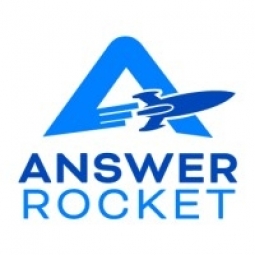Customer Company Size
Mid-size Company
Region
- America
Country
- United States
Product
- AnswerRocket
- Snowflake
- Tableau
Tech Stack
- Snowflake
- Tableau
- AnswerRocket
Implementation Scale
- Enterprise-wide Deployment
Impact Metrics
- Productivity Improvements
- Digital Expertise
Technology Category
- Analytics & Modeling - Real Time Analytics
Applicable Industries
- Electronics
Applicable Functions
- Sales & Marketing
- Business Operation
Use Cases
- Predictive Replenishment
Services
- Data Science Services
About The Customer
SnapAV is an industry-leading manufacturer and retailer of A/V, surveillance, control, networking, and remote management products for professionals. The company has 14 brands and employs over 900 people. It operates in over 100 countries. After a series of mergers, SnapAV consolidated multiple data sources into Snowflake and used Tableau to build visualizations for analysis.
The Challenge
SnapAV, a leading manufacturer and retailer of A/V, surveillance, control, networking, and remote management products, faced a challenge after a series of mergers. The company consolidated multiple data sources into Snowflake and used Tableau to build visualizations for analysis. However, Tableau had a high learning curve, and business users struggled to get answers on their own. As a result, business intelligence teams had to step in to help, slowing down the speed to insight. This process was inefficient and couldn't last.
The Solution
SnapAV integrated AnswerRocket on top of their Snowflake instance to solve their challenge. With AnswerRocket, product managers, category managers, market teams, and finance teams can simply ask questions in natural language and get fast answers. This eliminates the burden of manual analysis, allowing teams to spot opportunities and take immediate action, rather than waiting on reports or adding another item to the analytics backlog. Employees at every level use AnswerRocket to perform analyses, such as migration reports, acquisition reports, and sales driver analysis.
Operational Impact

Case Study missing?
Start adding your own!
Register with your work email and create a new case study profile for your business.
Related Case Studies.

Case Study
Remote Temperature Monitoring of Perishable Goods Saves Money
RMONI was facing temperature monitoring challenges in a cold chain business. A cold chain must be established and maintained to ensure goods have been properly refrigerated during every step of the process, making temperature monitoring a critical business function. Manual registration practice can be very costly, labor intensive and prone to mistakes.

Case Study
Predictive maintenance in Schneider Electric
Schneider Electric Le Vaudreuil factory in France is recognized by the World Economic Forum as one of the world’s top nine most advanced “lighthouse” sites, applying Fourth Industrial Revolution technologies at large scale. It was experiencing machine-health and unplanned downtime issues on a critical machine within their manufacturing process. They were looking for a solution that could easily leverage existing machine data feeds, be used by machine operators without requiring complex setup or extensive training, and with a fast return on investment.

Case Study
Cloud Solution for Energy Management Platform-Schneider Electric
Schneider Electric required a cloud solution for its energy management platform to manage high computational operations, which were essential for catering to client requirements. As the business involves storage and analysis of huge amounts of data, the company also needed a convenient and scalable storage solution to facilitate operations efficiently.

Case Study
Leveraging the IoT to Gain a Competitive Edge in International Competition
Many large manufacturers in and outside Japan are competing for larger market share in the same space, expecting a growing demand for projectors in the areas of entertainment, which requires glamor and strong visual performance as well as digital signage that can attract people’s attention. “It is becoming more and more difficult to differentiate ourselves with stand-alone hardware products,” says Kazuyuki Kitagawa, Director of Service & Support at Panasonic AVC Networks. “In order for Panasonic to grow market share and overall business, it is essential for us to develop solutions that deliver significant added value.” Panasonic believes projection failure and quality deterioration should never happen. This is what and has driven them to make their projectors IoT-enabled. More specifically, Panasonic has developed a system that collects data from projectors, visualizes detailed operational statuses, and predicts issues and address them before failure occurs. Their projectors are embedded with a variety of sensors that measure power supply, voltage, video input/ output signals, intake/exhaust air temperatures, cooling fan operations, and light bulb operating time. These sensors have been used to make the projector more intelligent, automatically suspending operation when the temperature rises excessively, and automatically switching light bulbs. Although this was a great first step, Panasonic projectors were still not equipped with any capability to send the data over a network.









